

















Let’s face it – there’s a lot of bullsh*t in marketing, especially when it comes to social media. Too often, it’s perpetuated by people charging a fortune for mediocre content that’s meant to ease the burden of your social media responsibilities.
The problem? That content usually does more harm than good It can hurt your engagement and waste both your time and money.

I’m going to cut through the cr*p and give you the straight facts about what works and what doesn’t
Now, before you think, “Ah well, of course she’s saying that, she sells social media content,” let me explain why you should listen
Nine years ago, in 2016, I started creating social media content specifically for physical therapists as a little sideline to the translational MSK professional journal I’d been publishing since 1999.
But that’s not the exciting part: A year later, to help my customers overcome technical barriers, we integrated an automated social media scheduling tool into the Co-Kinetic platform. This allowed us to post content directly on behalf of hundreds of physical therapists. Since then, thousands of posts have gone through our scheduler, generating tens of thousands of engagements That adds up to a LOT of data data that only we have access to (see, I do know what I’m talking about ��).


By combining this data with the awesome analytics power of AI, we’ve uncovered a goldmine of nsights into what social ontent actually works and, ust as importantly, what doesn’t.
This workbook is just the start of sharing that knowledge It’s designed to give you the most practical, nobullsh*t advice possible to help you make your social media work for you. (We’re also using it to guide our own content creation for the subscription content we create)
As with all Co-Kinetic resources, I’ve packed this workbook full of practical value. The last section is dedicated to cheat sheets, worksheets, FAQs, and other implementation tools to help you apply what you’ve learned
I hope you find it not only insightful but incredibly useful. Social media can feel like a massive time-suck with little return on investment, but by applying the principles in this workbook, you’ll know you’re following best practices and making the most of your organic social media efforts.
And if you’d like to understand how Co-Kinetic can help you maximise your effectiveness or you’d just like to chat to me about your marketing or social strategy, you can book a Social Review with me here (https://calendly com/co-kinetic/social-review)
With very warm wishes



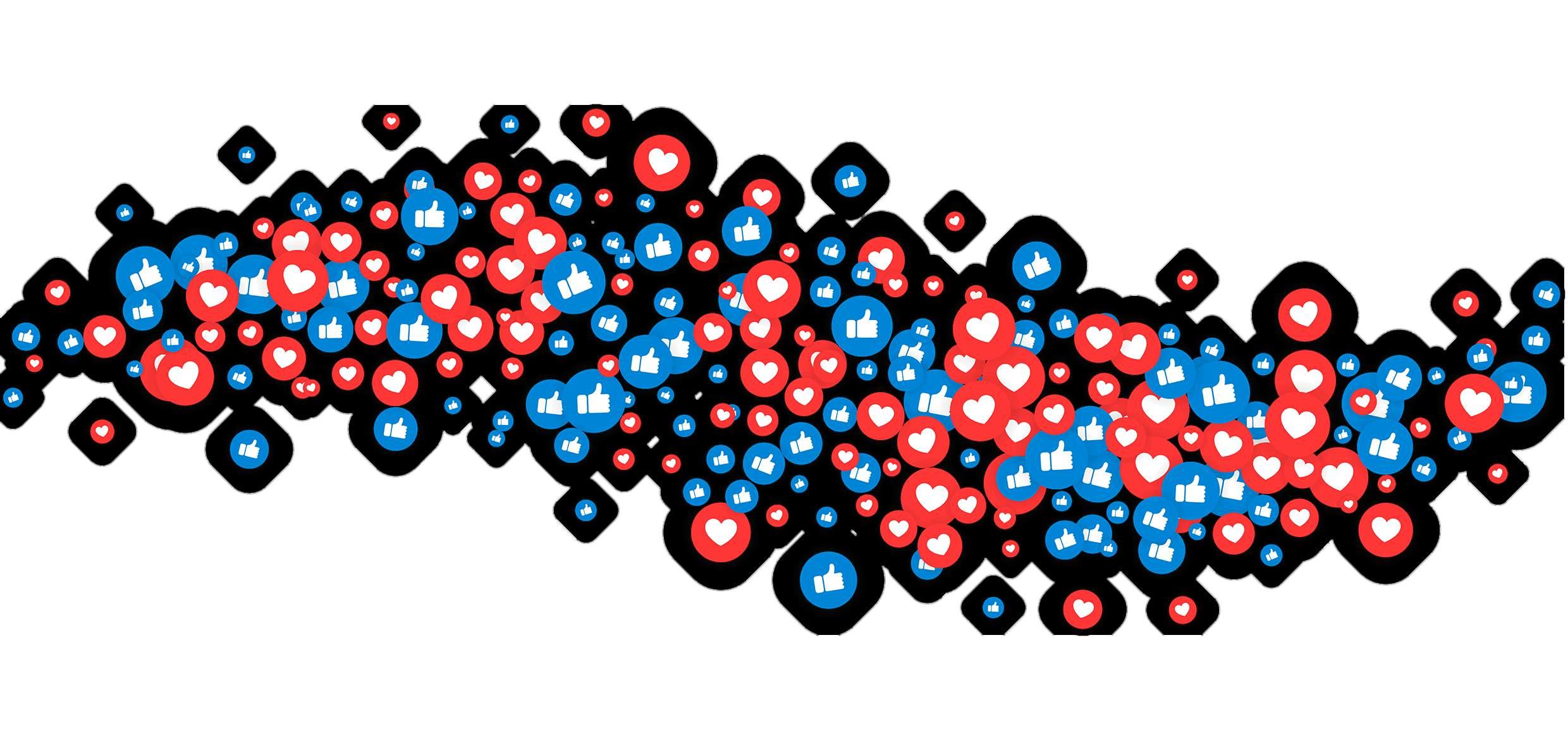

9. The Bigger Picture: How Social Media Fits Into the Customer Journey
Connecting social media with lead magnets, patient leaflets, and email marketing
How social media supports the broader customer journey
10. Conclusion: How to Get Social Media Working for You
Using social media efficiently
Encouraging outsourcing and focusing on core strengths
11. Practical Tools and Resources
9:1 Value-Led Social Media Cheatsheet
Ultimate Engagement Booster Cheatsheet
How Social Media Feeds into the Customer Journey: A Mapping Worksheet
Facts v Fiction: Social Media Myth Buster
Your Social Media Questions Answered












As a physical therapy business owner having a presence on social media is not really optional it’s essential. But while social media can be a powerful tool for building trust and growing your clinic, it’s easy to fall into the trap of social suicide: wasting valuable time and effort on content that delivers little to no return
This guide will show you how to ‘flip that script’ and turn your social media efforts into a success story. We’ll walk through practical, actionable strategies to help you use social media in a way that builds credibility, engages your audience, and supports your business goals
When we refer to organic social media, we’re talking about content that you post without paying for ads or promotion. This includes everything from your regular posts and stories to your interactions with followers. Organic social media relies on authentic engagement, meaning it focuses on building relationships through valuable content and engagements (comments/shares/likes etc), rather than buying visibility through paid ads
While organic reach has decreased over the years due to platform algorithms (we expand on that later), it still plays a critical role in building trust and authority especially for local, relationship-driven businesses like physical therapy clinics. In this guide, we’ll show you how to make your organic social media work smarter, not harder, and how to avoid the pitfalls that leads to wasted time and effort
It’s a fact that too many physical therapists are wasting valuable hours each week createing content that gets little to no engagement. Regardless of how consistent or inconsistent you might be (chances are it happens in fits and starts), the return on your social media investment (ROI) is most likely to be shockingly low
Even worse, as engagement on your posts decreases, so does the reach (the number of people who are shown that post), which in turn leads to even less engagement and then even less reach This is what I refer to as Social Suicide It’s like an inverted tornado sucking you downwards



Your audience isn’t engaging Your posts don’t reach new potential patients And you (or someone on your behalf) are spending hours each week creating, posting, and managing your social accounts
Some research that we carried out at Co-Kinetic, showed that the average PT spends 10 days a year on social media, only to see minimal or no results. That’s time that could be spent with your patients, growing your practice, playing sport, or just chilling out with your family or friends.

The small comfort might be that the frustration is genuine, and it’s not just you – most clinic owners are facing the same challenge You’ve probably been told numerous times (most likely by marketing ‘gurus’) that social media is a key tool for growing your clinic, and therefore, worth investing in.
But the reality is that organic reach has been falling for years, and social networks are no longer designed (if they ever were) to help small businesses grow without paying for ads which, frankly, is fair enough because why should they, they’re a business just like us?
And that leads many people quite rightly, to question: Is all this effort really worth it?
The answer is: Yes, social media is still important – but you need to approach it differently.
But first let’s understand why things are the way they are








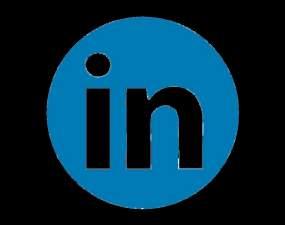




p hallenges, having a strong social med presence is important for several reasons:


People will look for you there: Patients often search for businesses social media first If you’re not visible, or your profile is out of date or i they might question your credibility.
Use it to communicate authority: Your posts especially those that educate or provide insights into treatments help establish you as a trustworthy expert in your field




Add value and build reciprocity: Sharing helpful tips, success stories, or advice without asking for anything in return builds goodwill with your audience, creating a sense of reciprocity where they feel more inclined to engage or seek your services
Build trust and engagement: Even with low engagement, every post is a touchpoint. Over time, these posts help potential patients feel more familiar and comfortable with your clinic
Increase brand awareness: Maintaining an active profile ensures that more people know about your clinic, even if they don’t engage directly with each post. You remain top of mind when they do need a physical therapist.
Grow an audience (with paid ads): While organic growth is limited, social media ads allow you to target local patients who may need your services You can use ads to promote lead magnets, special offers, or educational content to grow your audience.
Demonstrate social proofing: Sharing reviews, testimonials, and patient stories demonstrates your track record of success, which builds confidence in potential clients (but keep it light too many and it becomes selfpromotional).
SEO benefits direct and indirect: Social media profiles can drive traffic to your website, increasing its visibility on search engines Additionally, social signals (such as likes, shares, and clicks) can improve your site’s SEO ranking.
Generate indirect and direct sales: Even if patients aren’t booking appointments through social media (and we would strongly advise against using it for that), your presence can generate indirect sales by maintaining awareness of your services, leading them to book through other channels.
Legitimacy: In today’s dominating digital age, a strong social media presence makes your business look legitimate Patients expect to see you on social platforms, and an up-to-date, professional profile reinforces that your clinic is credible, active, and trustworthy 8 10 9 2 3 4 5 6 7 1




Before diving into your social media strategy, it's important to pause and assess your big picutre priorities. Based on our research, most physical therapists spend an average of 1.5 hours per week creating and posting on social media
Any effective marketer will tell you that while social media can be a valuable tool for visibility and engagement, its real power lies in how supports your other marketing efforts particularly email marketing
If you only have a limited amount of time for marketing, nurturing your email list should be your number one priority The return on investment (ROI) for email marketing consistently outperforms that of social media, making it the "golden goose" of your marketing toolkit. It’s simple: if you grow and nurture your email list, it will become your most reliable source of income

Consider this: the ROI on email marketing is reported to be as high as £32 for every £1 spent, whereas social media marketing often delivers a lower, more difficult-to-track ROI. This statistic alone should make it clear that focusing more time on building an engaged email list is a smarter long-term strategy for your clinic's growth
Of course, this doesn't mean social media is unimportant. In fact, social platforms can be a great way to grow your email list, especially when used in combination with paid ads Social media should act as a lead generator offering value to your audience, engaging them with quality content, and driving them toward subscribing to your email list. Once someone is on your list, you have direct access to nurture that relationship through well-thought-out email campaigns. With an effective email nurture programme in place, your social media becomes a gateway, funnelling interested prospects into a more effective, controlled channel
So, as you continue through this workbook and work on improving your social media efforts, remember that social is not the end game. It’s a means to an end, and that end should be to build a robust, active, and engaged email list That list, properly nurtured, will keep your clinic thriving long after social media algorithms and trends have changed.
Make your email list a top priority, and let social media support that goal You’ll find that over time, this shift in focus will pay dividends, helping you build stronger, more reliable relationships with your patients and delivering better returns for your time.








Building Your Email List Through Social Media
Offer Lead Magnets Promote Webinars or Workshops Run Contests or Giveaways Share Exclusive Content
Use Call-to-Action (CTA) Buttons
Collaborate with Local Partners

















While this workbook focuses on social media, it’s essential to understand how it can support your email marketing Social media helps generate leads, but your email list is where real relationships are built Here’s how you can use social media to grow your email list effectively.
A lead collection page (or landing page) is designed to capture email addresses in exchange for something valuable, like a free guide The goal is to keep it simple and focused
Key elements of a lead collection page: Clear headline: Address a problem, eg, “Struggling with Back Pain and Sleep?”
Brief description: Explain what they’ll get and why it’s useful Sign-up form: Only ask for an email and a first name.
Strong CTA: Encourage action, like “Download Now.”
Trust signals: Testimonials or badges can help build trust
A simple, focused page will convert more visitors into subscribers



A lead magnet is a free resource offered in exchange for an email address It should solve a specific problem and be easy to apply Examples of targeted lead magnets: Back Pain and Sleep Guide: Tips to manage back pain at night. Preventing and Treating the 8 Most Common Cycling Injuries Video Tutorial: 5-Minute Stretch Routine for Morning Back Pain
Make sure your lead magnets are: Targeted: Solve a real problem
Short and actionable: Provide quick wins. Easy to consume: Keep them simple and practical.
Social media should funnel your followers to your lead collection page. Here’s how:
Link to your lead collection page in your social profiles
Create posts promoting your lead magnet with a clear CTA Run ads to target your ideal audience. Collaborate with influencers to extend your reach.

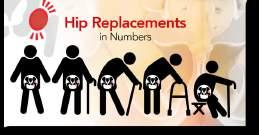


The goal is to move followers from social media to your email list for nurturing.

To make email collection seamless, follow these tips: Keep sign-up forms short: Only ask for necessary information Be compliant: Ensure GDPR compliance and include a privacy policy
Collecting emails is just the start. Enga regular, value-driven emails will conve upcoming Email List Growth & Engage Readers into Patients module, we’ll co your list, but how to nurture your subs loyal patients in a completely natural a
The Co-Kinetic system simplifies the en p Ready-Made Social Posts: Each post comes with a selection of built-in calls to action, allowing you to encourage email sign-ups. Hosted Email Lead Collection Pages: We build and host highly tested and optimised email lead collection pag branding

Pre-Built Lead Magnets & Success Pages: On they are directed to a success page giving acce targeted, professionally designed lead magnet practice.
This streamlined system takes the hassle out of em allowing you to focus on building relationships wit subscribers.
Using social media to grow your email list is crucia



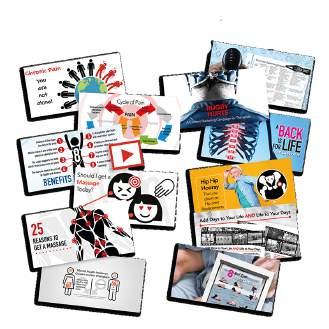





















ngagement rates are at record lows you can expect our followers to see your posts, and even fewer will ones that do will be the same people) Here’s why:
se personal connections: Platforms like Facebook and lt to keep users engaged with the content and so they at people are most likely to interact with Business pages, even if followed, are not prioritised unless users frequently interact with their content.
Fact: Organic engagement rates have dropped by 63% from 2017 to 2024
Key takeaway: Low engagement isn’t failure. It’s a result of the platform’s design, and you need to reset your expectations accordingly



Every business is competing for attention: There are more posts, images, videos, and ads than ever before Social media feeds are flooded with ontent, meaning fewer eyes on each individual post
Fact: On Facebook, a page with 1,000 followers might only have their post seen by 0.6% of that audience that’s 0.5 of a person!
Key takeaway: It’s not that your content isn’t good – it’s that every business is fighting for a limited amount of attention.
While your posts may not receive many likes or comments, they’re still eing noticed. Lurking is common! Many social media users don’t interact ith posts directly but still consume the content passively They observe he consistency and quality of a business’s posts over time before deciding to engage or make a booking
Key takeaway: Social media is primarily a credibility tool for physical therapists. Even with low engagement, the consistency and quality of your posts still build trust with your audience
Shift the focus from engagement metrics to the importance of maintaining a professional, trustworthy social media presence. Think of social media as a trust signal, as an extension of your professional brand.
Key takeaway: Don’t judge your success by likes or comments – judge it by whether your social media accurately reflects your expertise and professionalism 1 2 3 4

Patients are evaluating your credibility based on your online presence, even if they aren’t actively liking or sharing your posts A well-maintained, professional feed helps to reinforce trust with potential patients.
Instead of burning yourself out chasing likes and comments, the key to social success is focusing on the things that actually matter: building trust, staying visible, and being a reliable source of value for your patients It’s not about posting more; it’s about posting better.
You don’t need to post every day or stress about the time of day you publish. What matters most is delivering high-quality, value-driven content that builds credibility.
Think of social media as just another piece of your digital presence –even if your followers aren’t liking or commenting, they’re still seeing you They’re still deciding whether to trust you based on your presence.


If you know your social media could be working harder for you but feel unsure about where to start, why not book a chat with me? We can go through your pages together, discuss what’s working and what isn’t, and I can offer some practical, tailored suggestions to help you move forward with confidence. It’s all about finding the right approach for your practice. Book a chat here. https://calendly.com/co-kinetic/social-review






Imagine this: You land on a physical therapy clinic’s social media page and start scrolling through their posts
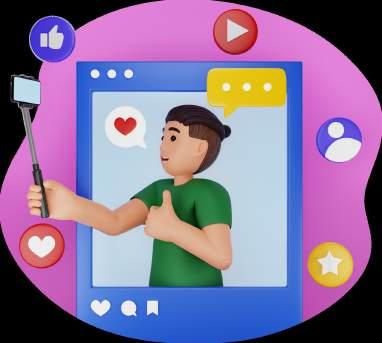

The first post you see is promoting their latest offer for a free consultation. The next one is showcasing the clinic’s team. Then there’s another one about how many years they’ve been in business, followed by a post promoting their 10% discount on appointments
You keep scrolling, and it’s more of the same – posts promoting their services, showing off their clinic, or talking about how great they are
How does it make you feel? Do you feel connected to this business or the people in it, or do you feel like you’re being sold to with every post?
This is what I refer to as social suicide It’s a feed full of “me, me, me” posts that do nothing for the reader and only serve to promote the clinic. It’s all about self-promotion and not about offering value to the audience.

Social media isn’t a billboard: If all your content is focused on promoting your business, your audience will tune out. People don’t come to social media to be sold to. The clue is in the name, they’re there to connect with people, learn, and be entertained ie socialise! You’re not building trust: When every post is about you, it becomes hard for your audience to trust you as a reliable source of help Trust is earned through by putting your audience’s needs above your own. You’re missing an opportunity to connect: If you’re always focused on selling, you’re missing the chance to genuinely engage with your audience and address their needs

To avoid social suicide, you need to flip the script Instead of making your social media all about you, it needs to be all about your audience This is where the 9:1 value rule comes in Try and make sure that 9 out of 10 of your posts provide value to your audience.

But what does “value” look like? And what exactly counts as “promotional”? Let’s break it down:
Most people think of promotional posts as hard-sell offers, like discounts, free consultations, or announcements about services While that’s certainly part of it, promotional content is much broader than that Anything that isn’t “reader-first” is basically promotional.
Promotional content includes:
Posts that are purely about your clinic (eg, team introductions, office tours)
Testimonials or patient success stories (while helpful, these can still come across as self-promotional if overused and not patient-led)
Announcements about your business (eg, awards, certifications, or clinic updates)
Sales offers, discounts, and booking reminders.
Value-driven content is reader-first. It’s self-less NOT selfish. It’s content that provides something useful, interesting, or helpful to your audience without directly asking for anything in return. The goal is to give, not to get






Examples of value-driven content:
Educational posts: Share tips on injury prevention, home exercises, or how to recover faster from specific conditions. Inspirational content: Post about success stories where patients have overcome significant injuries or challenges (focus on the patient’s journey, not the clinic’s role)
Relatable content: Discuss common physical challenges that your audience might be experiencing, like dealing with back pain from sitting at a desk all day.
Engagement posts: Ask questions, run polls, or encourage comments that get your audience talking and interacting


By following the 9:1 value rule, you’re building trust and credibility When 90% of your content is focused on adding value to your audience, they come to view you as a trusted resource rather than just another business trying to sell something
The 10% promotional content can then be used sparingly and is therefore much more effective. Once you’ve built trust and delivered value, your audience will be far more receptive to the occasional post that promotes your services or offers a discount
To recap: Social media is about your audience, not about you If you want to avoid social suicide and move toward social success, it’s essential to focus on value-driven, reader-first content.
In the next section, we’ll break down exactly how you can start creating the kind of content that builds trust, engages your audience, and makes your clinic stand out for all the right reasons

Go and do a quick flash audit of your last 20 social posts on your main social network and see how many fall into the promotional category and how many into the value category Be honest when reviewing those posts as we are all susceptible to not wanting to admit the truth ��.
Value is Key
In social media, value always trumps frequency Rather than stressing about how many posts you publish or the exact time of da you “post,” your focus should be on creating valuable content that resonates with your audience.
What does valuable content look like?
At Co-Kinetic we came up with the EIRE framework to guide the content creation process for our subscriber campaigns:
Educate: Share tips, advice, or how-to guides that directly help your patients solve problems.

Inspire: Provide motivational stories or share success stories that show how patients have overcome challenges
Relate: Address common concerns or struggles your audience might face, such as dealing with back pain or recovering from an injury.
Entertain: Lighten the tone now and again with some fun posts that are relevant to your ‘industry’, this could be humour posts (which in our experience always do very well) or it could be memes, dingbats, or other engagement boosting posts
By following these principles, you’ll be creating content that not only engages your audience but also builds trust and authority Your goal isn’t to become a social media influencer; it’s to become a trusted expert in your local community
Fact: Posts that use the EIRE framework (Educational, Inspirational, Relatable, Entertaining) are far more likely to resonate with your audience, driving long-term engagement and patient loyalty
Key takeaway: Your goal is to establish authority and trust with your patient base by creating posts that add value and address their needs.










ng 2-3 times a week is more than enough, as long as each post is stent in delivering value and aligned with the needs of your nce
A common fear is that posting too much will bombard followers, but the reality is that so few people will see each post that it’s nearly impossible to overwhelm anyone. As we discussed earlier, the algorithms limit organic reach, meaning only a tiny portion of your audience sees each post anyway. Instead of worrying about frequency, focus on ensuring each post is impactful and valuable to those who do see it
Key takeaway: Consistency is more important than frequency Posting fewer times with high-quality content that speaks to your audience’s concerns will deliver much better results than frequent, lower-value updates.



While it’s important to post a variety of content to engage your audience, avoid confusing the algorithm by mixing unrelated topics in your feed For example, one minute posting about physical therapy tips, and the next sharing unrelated content like pizza recipes or cute cat photos, just confuses everyone and dilutes your message.
Social media algorithms are designed to categorise your content and show it to users who engage with similar topics Posting about a wide range of unrelated subjects can make it harder for the algorithm to understand your niche, which will reduce the visibility of your posts to the right audience.

Key takeaway: Stick to topics that align with your expertise and brand Stay focused on content that adds value to your patients and is relevant to their needs and interests. This helps the algorithm categorise your content correctly, increasing the likelihood that your posts reach the right audience
As it can be hard to visualise how you apply the EIRE framework, so we’ve included some examples of social posts in the campaigns we create for our subscribers, so you can see how it works in the real world.
As this can be hard to visualise, we’ve included some examples of social posts from the campaigns we create as part of our Clinic Growth Hub subscription These examples will help you put the concept into reality and show how you can create value-driven posts that engage your audience without being promotional and while keeping it fun and entertaining



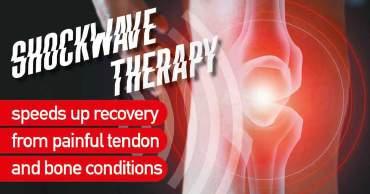



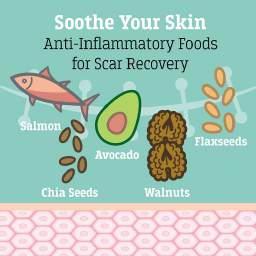








Now that we’ve discussed the type of content that resonates with your audience, let’s move on to the structure of your posts. Even the most valuable content won’t drive results if you don’t give your audience a clear next step This is where Calls to Action (CTAs) come into play




Most posts you publish should have a clear purpose Whether it’s building trust, providing value, or encouraging your audience to take action, you need to guide them toward the next step in their journey. CTAs are essential because they provide that guidance, helping your audience understand exactly what to do after engaging with your post Without a CTA, even the most informative posts can become dead ends, leaving your audience unsure of how to proceed.
Here’s why CTAs are so important:
1. Encourage Engagement: CTAs give your audience a reason to interact Whether it’s liking, sharing, or commenting on a post, CTAs encourage active engagement rather than passive consumption.
2. Drive Conversions: CTAs guide your audience toward meaningful actions like signing up for your email list, downloading a resource, or booking an appointment These actions help turn your followers into patients
3. Measure Success: CTAs provide a way to track the effectiveness of your social media efforts. By analyzing which CTAs lead to the most interactions, you can refine your strategy over time and focus on what works
4. Create a Journey: With well-placed CTAs, you’re not just posting content; you’re creating a journey for your audience Each post moves them further along the path from initial engagement to becoming a trusted patient.


When adding CTAs to your posts, it’s important to be clear, concis and purposeful. You don’t want to overwhelm your audience with many choices or overly complicated actions
Here are some best practices for using CTAs: Be Clear and Specific: Tell your audience exactly what they should do next (e.g., “Download our free guide on back pain relief”).
Use Action-Oriented Language: Words like “Learn,” “Downloa “Book,” or “Share” encourage action and provide clarity on wh expect
Make It Relevant: Ensure your CTA aligns with the content of post. If you’re sharing tips on injury prevention, the CTA should offer something related (eg, “Learn more injury prevention exercises”)
Avoid Over-Promotion: Balance your CTAs with your value-dr content. You don’t want to come across as pushy, so it’s impor to limit promotional CTAs and focus on providing genuine valu first
Our Co-Kinetic platform uses a streamlined process to help you integrate CTAs into your posts effectively Here’s how it works: We have already created social posts for you with some suggested post copy
You simply select a CTA from the dropdown menu, and the platform, using AI tailored to your specific profession and the campaign content, automatically rewrites the post to ensure the CTA flows naturally, is relevant to the context of the campaign and follows best practice.



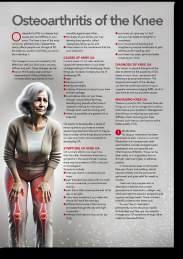

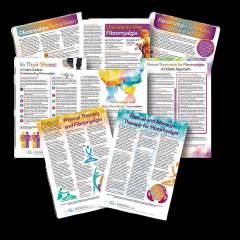


Here are the six CTAs available in the Co-Kinetic platform and how they work:
Link to a Specific Patient Advice Leaflet
Example: After posting a tip about managing knee pain, you could add a CTA that says, “Download our free patient advice leaflet on knee pain” to offer more value and encourage engagement (those leaflets are included in the campaigns already and include your own branding and contact details)
Link to Email Lead Collection Page
Example: If you’re running a special educational campaign, your post could include a CTA like, “Sign up for our free eBook on sports injury prevention,” allowing you to grow your email list while delivering value (don’t worry we’ve created and host that page for you, and we’ve created those lead magnets resources too, so there’s nothing for you to do here except post the social media).
Direct to Campaign Success Page
Example: For a comprehensive approach, you could guide followers to a campaign page that offers all the related resources in that campaign and the CTA could read, “Explore our full recovery guide on back pain management.” And yes, we’ve created and host that page for you too with all those lead magnets available to be downloaded from that page (they’re also branded with your details)
Link to an External URL
Example: If you’re sharing content from an external expert or a trusted resource, or from your own blog, you could include a CTA like, “Read more from this article on improving posture,” leading your audience to additional high-value content
Example: Sometimes, it’s best to offer purely educational content without asking for any action. These posts are a great way to build trust and authority without appearing self-promotional
Example: When you want to encourage a more personal connection, you could invite potential patients to book a free discovery call. The CTA could read, “Need advice on your injury or pain management? Book a free discovery call with us to discuss how we can help you get back to feeling your best”



One additional factor to consider when structuring your posts is the platform you’re using Different social networks have different audience behaviours, post formats, and content preferences What works on Facebook might not perform as well on Instagram or LinkedIn, for example.
In fact, adapting your posts for each network is a best practice that can significantly improve engagement Using AI, Co-Kinetic helps by offering a one-click Adapt for Networks button, which automatically rewrites your post according to the best practices for each platform whether that’s adjusting the length, tone, or adding hashtags and emojis.
Here’s why adapting posts is important:
Post Length and Format: On Instagram, shorter posts with striking visuals perform better, while on Facebook or LinkedIn, longer, more detailed posts can engage users more effectively. Hashtags and Keywords: Instagram thrives on hashtags, while Facebook uses hashtags sparingly Adjusting your hashtag strategy based on the platform can improve reach
Audience Expectations: The audience on LinkedIn expects more professional content, whereas Instagram followers might appreciate more visual, lifestyle-driven content Tailoring your tone and messaging ensures your content resonates
Key takeaway: Using clear and purposeful CTAs ensures your audience is consistently engaging with your content, while adapting your posts for each social network maximizes visibility and impact. By leveraging the tools available on Co-Kinetic, you can streamline this process and focus on what matters most: providing value to your patients








If you know your social media could be working harder for you but feel unsure about where to start, why not book a chat with me? We can go through your pages together, discuss what’s working and what isn’t, and I can offer some practical, tailored suggestions to help you move forward with confidence. It’s all about finding the right approach for your practice Book a chat here https://calendly com/co-kinetic/social-review







Every social media platform has its own quirks and best practices. While the core message of your content can remain the same, it’s important to tailor your posts to match the format, audience, and style of each network Here are some practical tips for adapting your content effectively across major platforms:












Instagram is a visual-first platform Your images or videos should be highquality and visually appealing Include text overlays where possible to reinforce your message without relying entirely on captions Keep your hashtags plentiful (around 10-15 per post) and relevant to improve reach.
LinkedIn’s audience is more receptive to long-form content Use this platform to share detailed posts, articles, or case studies that demonstrate your expertise. Make sure your posts are professional, with a focus on insights or industry trends.
Twitter is all about brevity Keep your messages concise and to the point – stick to one key message per post. Twitter is also fast-paced, so it’s a good place for sharing quick updates, industry news, or commentary on trending topics. Use hashtags strategically, no more than 1-2 per tweet.
Stories are perfect for sharing timely, behind-the-scenes content
Whether you’re promoting a special event, showing a quick workout tip, or sharing a success story, Stories are a great way to stay top of mind without cluttering your main feed Keep them engaging with polls, stickers, or questions to encourage interaction
Facebook is still the home of groups where people gather around common interests Posting valuable, educational content in relevant Facebook groups (such as local health or fitness groups) can help you reach a targeted audience Remember to add a Call to Action (CTA) that invites the group members to learn more or follow your page.
Instagram is highly interactive Use features like polls, questions, or quizzes in your Stories to get people engaging with your content You can even run mini-challenges or encourage followers to submit their own tips or photos. This helps build a community around your brand 1 2 3 4 5 6



LinkedIn is a professional network, so your images and graphics should reflect that Invest in clean, branded visuals or infographics that deliver information quickly and effectively. Avoid overly casual or playful images that might not resonate with a more formal audience.
Facebook’s algorithm tends to favor video content Consider using short, informative videos like a quick tip of the week or a short explainer on a common injury. Videos should be captioned, as many users watch without sound Remember to keep them under 2 minutes for maximum engagement
While Instagram thrives on multiple hashtags, platforms like Facebook and LinkedIn respond better to 1-2 well-chosen hashtags per post Twitter also benefits from 1-2 hashtags Be sure to research popular hashtags in your niche for each platform and adjust accordingly.
It’s easy to get caught up in worrying about when to post, but the truth is, post timing is largely irrelevant on most social networks. While it was once important to post at specific times to reach the maximum number of users, today’s algorithms are much more influential
Social media platforms prioritise relevance and engagement over timing. This means that a valuable post whether it’s an educational tip, an inspiring story, or an engaging question will be shown to users when it’s most likely to engage them, regardless of when you originally posted it
Instead of focusing on the exact time to post, make sure your content is:
Consistent: Aim for a regular posting schedule that keeps your audience engaged without overwhelming them
High-quality: Content that educates, inspires, and engages will always outperform frequent but less meaningful posts.
Engaging: Posts that invite interaction (e.g., comments, shares, or clicks) will naturally be boosted by the algorithm, ensuring more people see it over time








Key takeaway: Focus on quality and engagement rather than worrying about timing. The algorithm ensures your posts will reach your audience when they’re most likely to interact with them



1 2 3
Engagement – whether it’s likes, comments, shares, or clicks is one of the key ways to measure how well your content is resonating with your audience. However, it’s important once again, to remind you to have realistic expectations: in today’s algorithm-driven landscape, organic engagement will naturally be low, and that’s perfectly normal
With that in mind, aiming for engagement is still important, because even small amounts of interaction can help build relationships with your audience and increase the visibility of your posts Here are some strategies for maximising your chances of getting that all-important engagement:
Now that we’ve set the context, let’s explore practical strategies to boost engagement on your posts:
Posts that include a clear question encourage your audience to respond. Keep your questions simple and relevant to your audience’s experience, such as, “How do you stay active during the week?” or “What’s your go-to exercise for back pain relief?” Direct questions make it easy for your followers to engage
People love sharing their opinions, and a poll or survey is a great way to get quick engagement On platforms like Instagram Stories, Twitter, or Facebook, you can use built-in tools to create polls, asking questions like, “Which exercise do you prefer: yoga or pilates?”
Posts that reflect a common experience, such as struggles with pain management or challenges in staying motivated to exercise, can drive engagement People are more likely to comment or share when they feel connected to the content. The best relatable posts are the ones where someone looks at it and things “that’s so me!”those are also the most shared posts! Here’s an example of one or our chart topper relatable posts (people really relate to it because it consistently outperforms posts we think are equally good!)


People love to show off their ‘cleverness’, and posting fun, visual challenges like dingbats or puzzles can be a great way to encourage interaction. These types of posts invite your audience to solve a puzzle and then share their answers in the comments, creating natural engagement (we’ve put together an Ultimate Guide to Engagement Boosters at the end of this workbook)
For example, we’ve recently introduced video dingbats (think of the 80s UK show Countdown) and these have proven to be incredibly popular They’re simple, quick, and get people thinking, which makes them more likely to comment and share the post with friends. We use them to communicate important messages about the campaign in question. This campaign focused on fibromyalgia.

Challenges and giveaways provide incentives for your audience to engage You could run a simple fitness challenge or ask followers to share their favourite wellness tip in the comments for a chance to win a free consultation or resource. Be sure to keep it simple and relevant to your audience’s needs
Engagement shouldn’t be a one-way street. When people take the time to comment on your posts, be sure to respond promptly. This not only boosts your post’s visibility in the algorithm but also strengthens the connection with your followers, showing that you value their input




Strategically forms like Instagram and Twitter, hashtags help your et discovered by a wider audience. Use a combination d and niche hashtags to maximise reach For example, on knee pain might include #KneePain, calTherapy, and #SportsInjuryRecovery Be mindful not do it quality beats quantity when it comes to hashtags.
f your posts can specifically encourage followers to our content with their networks Phrases like “Tag a who needs this tip” or “Share this with someone who enefit” can subtly prompt users to spread your content, ng your reach, but be careful not to overdo these s
am and Facebook Stories offer interactive features like polls, quizzes, and questions. Using these features is a fun way to engage your audience and gather feedback or insights in real-time
Incorporate CTAs to Drive Action.
As discussed earlier, clear and purposeful Calls to Action (CTAs) can encourage your audience to engage further Whether it’s asking them to “Comment below with your thoughts” or “Click to learn more,” CTAs help guide your followers towards interaction, increasing the chances of meaningful engagement.


If you're questioning your current social media strategy, wondering if your budget could be working harder, or simply need a sanity check on your marketing approach, I'm here to chat. No strings attached, just honest advice tailored to your clinic. And if you're curious about the marketing solutions I offer, we can cover that too. You can book a chat with me here https://calendly.com/ co-kinetic/social-review





It’s important to remember that, despite following best practices, organic engagement will always be low, especially for businesses. The key is to focus on quality over quantity a few genuine interactions can be more valuable than chasing a large number of likes or shares And remember, even if engagement isn’t immediately visible, your posts are still working to build credibility, trust, and visibility over time Social media is a long game, and every interaction helps move you closer to building a loyal and engaged patient base.
Key takeaway: While you won’t get much engagement with most posts, following these strategies will maximise your opportunities for interaction, helping you to build deeper connections with your audience.
Social media is often viewed in isolation, but it’s most powerful when integrated into your wider customer journey Your posts aren’t just standalone efforts to build engagement they’re a crucial touchpoint that connects your audience to other marketing assets and helps move them along the journey from awareness to trust, and ultimately, to booking an appointment or doing business with you.
Here’s how social media fits into the bigger picture and why it should be viewed as part of a connected strategy rather than a one-off activity:
Social media is the entry point for many of your potential patients It’s often the first place they come across your clinic or services But social media shouldn’t be the end of the journey it’s just the start The real value comes from guiding your audience toward more in-depth, valuable content that provides lasting support. This could be:





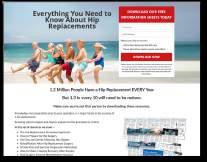
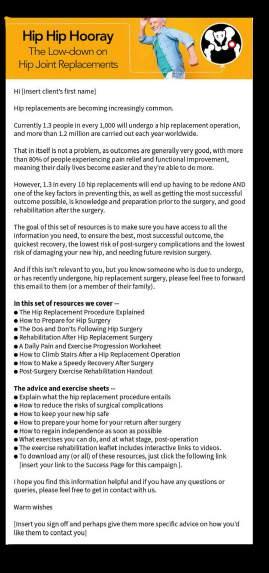

4

Reinforce key messages from your social media in emails and blogs to create a cohesive experience 2 3
One of the most effective ways to connect social media to the rest of your marketing is through lead magnets For example, if you share a tip on managing back pain, your social post could link to a downloadable patient leaflet on back pain recovery. This resource adds value, while your lead collection page helps capture contact information to continue nurturing that patient
Social media posts + Lead magnets + Lead collection pages = Ongoing engagement and potential bookings
With Co-Kinetic, each campaign integrates these elements seamlessly, but you can apply this principle even if you’re working manually Just make sure each social post has a next step that takes your audience deeper into the journey
Once someone engages with your lead magnet and shares their email, you can (and should) bring them into a nurture sequence – a series of automated emails that continue to offer value over time. Social media works at the top of the funnel, but it’s email marketing that does the heavy lifting when it comes to deepening relationships and encouraging conversions
Your social posts should link directly to blog posts, newsletters, or occassional updates about your practice, helping to bridge the gap between the casual scroller and the more engaged follower This ensures you’re maintaining visibility and staying top of mind, even if they’re not ready to book an appointment
One of the strengths of an integrated campaign is that it allows all your marketing assets to work together. The Co-Kinetic campaigns are designed to connect every piece of content, from patient leaflets, to social posts, to nurture emails and blog content and you can follow exactly the same process
Here’s how you can apply this to your strategy: Ensure your social posts link to valuable content like leaflets, blog posts, or videos that are aligned with your campaign
Use the same messaging and tone across all your platforms for consistency.



While your posts may not get the highest engagement, their real value comes from helping to build trust With social media, you’re able to consistently provide value and stay visible in the places your patients are spending time. By linking your posts to well-written, informative content and guiding your prospects through a nurtured journey, you are positioning your clinic as a trusted resource that cares about their well-being
Social media is the public face of your broader marketing strategy, but it should never be a siloed effort. The strength lies in connecting it to your other marketing assets and helping potential patients move through their journey, from initial interest to ongoing trust and eventual booking
Key takeaway: Think of social media as one piece of a larger puzzle. Its power comes from how well it connects to the other pieces of your marketing patient leaflets, lead magnets, nurture emails, and blog posts all working together to build trust and convert your followers into loyal patients.
Social media is an important piece of your marketing strategy, but it’s also essential to manage your time effectively As a physical therapist or business owner, your expertise lies in working with patients and growing your clinic not necessarily in creating content or managing social media accounts. The key to success is to use social media strategically, focusing on trust-building, engagement, and adding value – and doing it as quickly and efficiently as possible
If social media isn’t something you enjoy or are particularly skilled at, consider outsourcing or using tools that automate the process, so you can free up your time to focus on highervalue activities. Business owners can’t afford to waste valuable time on tasks that aren’t their speciality, so investing in services that help you achieve results faster can be a smart decision. Just don’t be these guys!






It may be worth doing an audit of how much time you spend each month creating and posting content to give you some context Services like the one I provide through Co-Kinetic (as well as others out there) are designed to help you achieve your goals efficiently, allowing you to focus on better uses of your time. Equally you can employ freelancers or an agency to help you The important thing to remeber, is that your time is not free
Note: Some of these could fall into multiple categories, it’s not an either/or situation.

Educational Posts:
Infographics and statistics
Injury prevention tips
Links to advice leaflets
Helpful blog posts
Condition explainer videos
How-to guides for recovery
Exercise technique videos
Posture tips for different occupations
Seasonal health tips
Explaining physical therapy techniques or equipment
FAQs on common injuries or treatments
Links to other website resources
Research summaries and updates
Your take on topical news stories
Book reviews
Links to podcast episodes
Patient success stories
Motivational quotes
Recovery journey highlights
Before and after case studies
Stories of overcoming injuries or challenges


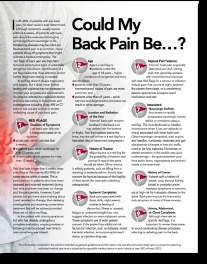




Celebrating patient wins and progress milestones
Patient interviews and reflections on recovery and perseverance
Motivational challenges for patients (e.g., "30-Day Mobility Challenge")
Sharing patient goals and how they achieved them
Uplifting stories of long-term recovery or resilience
Highlighting patient efforts in rehabilitation
Note: Make sure to keep these value-led and not self-promotional The focus must be in the interest of the reader.




This category can be tricky to grasp, but these posts resonate the most and often get the highest engagement. We call them “share and declare” posts when you hit something so perfectly relatable, it feels small yet deeply significant to the reader These are the connections you’re looking to create.
To get there, you need to dive deeper into your patients’ experiences Move beyond surface-level symptoms and explore the real, everyday frustrations that finally push a patient to seek help. It’s not just about saying "my back hurts"; it’s about the deeper impact that pain has on their life
Ask yourself: What’s the real reason a patient came to you? What everyday activities became unbearable or impossible? Maybe it’s the struggle to put on socks, the embarrassment of needing help to get out of the bath, the heartbreak of not being able to pick up a grandchild, or the frustration of missing their weekly tennis game These emotionally charged moments go beyond pain they highlight how an injury disrupts what matters most to them.
To create powerful, relatable content, reflect on what day-to-day activities your patients mention in passing What were the moments that finally brought them to your clinic? Was it when shoulder pain stopped them from playing catch with their kids? Or when hip pain made driving a mission?




By identifying these real-life moments, you can create content that makes your audience feel seen, understood, and truly heard. That’s the key to relatability connecting on a human level where people think, “That’s me!” or “That’s exactly how I feel”
Relatable posts are powerful trust builders because they demonstrate deep empathy and understanding. They can be informative or funny, but the key is to make the reader feel like they’re not alone in their situation.




Check out our Ultimate Guide to Engagement Boosters Cheatsheet coming next, for more ideas but these could include:
Memes, jokes, gifs
Myths debunked
Visual puzzles, riddles and quizzes
Polls or questions
Cartoons/animations


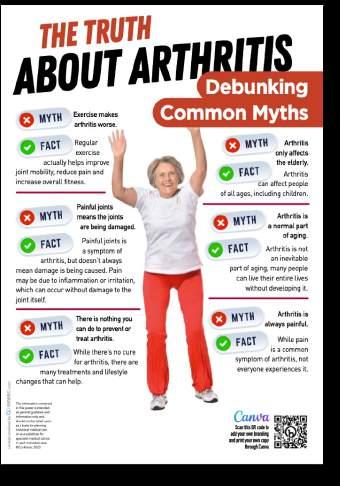

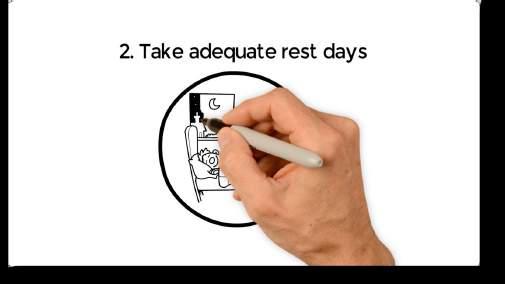







The 9:1 rule is designed to help you build trust and add value to your audience by focusing on helpful, educational, and relatable content 90% of the time However, it’s still important to include some promotional content to showcase your services and grow your practice this is where the 1 comes in

Self-promotional posts should make up only 1 out of every 10 posts. These are posts that focus more on your clinic, services, or success, rather than directly offering value to the reader. While they can help build credibility and generate interest in your offerings, they don’t provide the same immediate benefits as educational or relatable content Below are some examples of posts that fall into the self-promotional category:
Patient testimonials
Service promotions
Special offers and discounts
Clinic updates
Before-and-after case studies
Staff spotlights or team introductions
Event announcements
Awards or accolades
Clinic reviews and ratings
Content solely about your expertise
Behind-the-scenes at the clinic 1Post

9POSTS






Do you sometimes feel like you spend more time on marketing than treating patients? With The Clinic Growth Hub, you get everything you need to simplify your marketing and grow your clinic effortlessly. Here’s what you get:
Creation
Ready-to-Use Social Media Posts:
High-quality, pre-made posts with text designed to engage and attract patients
Custom AI Content: Generate personalised content tailored to your clinic’s voice, discipline, and audience.
Custom CTAs: Drive results with clear calls to action whether it's sign-ups, downloads, or bookings.
One-Click Rewrite for Networks: Tailor each post for different platforms with just one click, optimising reach Emails and Blogs: Ready-to-publish email campaigns and blog posts to build authority and nurture relationships
Lead Generation Tools
Lead Magnets & Landing Pages:
Done-for-you lead magnets, with fully hosted lead collection and success pages, so you can effortlessly capture email leads.
Social Posts for Ads: Ready-made posts designed to promote your lead magnets, which can also be used as ads to collect targeted leads.
Interactive Content: Visual puzzles, quizzes, and challenges to boost interaction and build stronger connections
Educational and Relatable Posts:
We use our proven EIRE framework (Educate, Inspire, Relate, Entertain) to foster trust and build authority
Data-Driven Insights
Performance Dashboard: Track which pieces of content your audience is interacting with see clicks, views, engagements, and refine your strategy.
Automation and Support
Social Media Scheduler:
Automate your posts up to 3 months in advance, saving you hours every month
1:1 Coaching: Strategy sessions to help refine your marketing plan and maximise the Hub's potential. Done-For-You Options: Want to hand over the reins? We can take care of your content setup and scheduling for you.
Boostengagementonsocialmediawiththesepracticalideas. Eachtypeofpostisdesignedtoencourageyourfollowers–bothpotentialandcurrentpatients–tointeract,comment,andshare.
Below are some of the formats we use when creating social media content for our subscriber campaigns
Posttwosimilarimagesandaskyour followerstospotthedifferencesbetween them.
Example:“Canyouspotthe5differences betweentheserehabexercisesetups?”
Postanimageofapatientperformingan exercisewithanintentionalmistakeintheir form,andaskyourfollowerstofindtheerror.
Example:“Canyouspotwhat’swrongwiththis squat?”
Postavisualpuzzle usingemojis,images orvideosthat representawordor phraserelatedto injuriesorphysical therapy.(Answer: LowBackPain)

Postavisualriddlerelatedtoanatomyor commoninjuriesandaskyouraudienceto guesstheanswer.
Example:"I’malwaysonthemove,butInever gettired WhatamI?"
Answer:Blood
Postside-by-sideimagesofsomeonedoing anexercisecorrectlyandincorrectly,andask whichoneiscorrect.
Example:“Whichoftheseplankpositionsis correct–leftorright?”

Postananatomyimagewitharrowsanda uniqueletterbyeacharrowandaskyour followerstolabelthespecificbodypartsin thecommentsbelow.
Postaphotoofatherapytoolortechnique andaskyouraudiencetoidentifyit.
Example:“Whatisthistool,andhowdoweuse itforrecovery?”
Postafunorengagingimagerelatedto physicaltherapy,rehab,orexercises,andask youraudiencetowriteacaptionforitinthe comments.Thiscansparkcreativityand interaction.
Example:Postafunnyorexaggeratedimageof someonedoinganover-the-topstretchandask, "Captionthis!"


Pollsandsurveysaresimplebuteffectivewaystogetyourfollowersinvolved.
1. pain & symptom polls
These polls allow patients to share their experiences with pain or injuries, creating relatable discussions.
Back Pain Polls: Example: “Where do you feel most of your back pain lower, middle, or upper back?”
Injury-Related Questions: Example: “What’s the most common injury you’ve had sprained ankle, knee pain, or neck strain?”
Posture Polls: Example: “Do you think your posture affects your pain? Yes or No?”
Lifestyle Habits: Example: “Sitting all day at work? How often do you stretch during your workday Never, Sometimes, or Frequently?”
2. treatment and recovery preferences
Ask your audience about their treatment preferences to understand how they approach recovery.
Patient Preferences: Example: “Which do you prefer for recovery heat or ice packs?”
Manual Therapy vs. Exercise-Based Therapy: Example: “Which treatment do you feel works best for you hands-on therapy or guided exercises?”
Therapy Tools: Example: “Which tool do you prefer during treatment foam roller or resistance bands?”
Exercise Polls: Example: “Which stretch works best for your back pain?” Give stretch options
3. fun myths and facts polls
Engage your audience with polls that test their knowledge and debunk common injury myths.
Injury Myths: Example: “Does cracking your knuckles cause arthritis? Yes or No?”
Recovery Myths: Example: “Is rest the only way to recover from a muscle strain? True or False?”
Fun Fitness Facts: Example: “Running causes more knee injuries than walking True or False?”
4. motivation and lifestyle habits
Ask your followers how they stay motivated and how they integrate healthy habits into their lives.
Daily Habits: Example: “How often do get outside and exercise in fresh air Every day, 2-3 times a week, or Only when I remember?”
Stretching Polls: Example: “When do you usually stretch Before exercise, After exercise, or Throughout the day?”
Nutrition/Hydration Polls: Example: “How much water do you drink daily Less than 1 litre, 1-2 litres, or More than 2 litres?”
Activity Level: Example: “How often do you engage in physical activity Every day, 2-3 times a week, or Rarely?”
feedback and preferences
Use these polls to gather feedback from your followers and improve your services or offerings.
Clinic Feedback: Example: “What would you like to see more of on our social media Exercise tips, Success stories, or Health tips?”
Appointment Preferences: Example: “Do you prefer morning or afternoon appointments?”
Health Content Preferences: Example: “Which content do you fin most useful – Inju prevention, Pain management, or Nutrition tips?”




Inadditiontovisualchallengesandpolls,herearemorecreativeideasto engageyourfollowers.Thesepostsaredesignedtofosterinteractionand buildasenseofcommunity.
Flip the conversation by asking your followers for their opinions or advice on specific health or recovery topics. This humanises your social media presence and encourages engagement.

Health Tips: Example: “What’s your go-to way to stay active during the winter months?”
Recovery Tips: Example: “How do you stay motivated to complete your rehab?”
Activity Recommendations: Example: “What’s your favourite type of low-impact exercise for joint health?”
Quizzes are fun and educational, and they give your followers chance to test their knowledge about health, injuries, or treat
Injury Knowledge Quizzes: Example: “Do you know the diffe between a sprain and a strain? Take our quiz and find out!”
Treatment Awareness: Example: “Test your knowledge! How does it typically take to recover from an ACL injury?”

Ask your audience what types of exercises they’d like to see demonstrated. This not only engages them but also helps tailor your content to their specific needs.
Stretch Requests: Example: “Which stretch would you like us to demonstrate next – shoulder stretches or hamstring stretches?”
Pain Management Techniques: Example: “What’s your biggest challenge – pain managing joint or muscle stiffness? Let us know, and we’ll demonstrate techniques to help.”
Create fun, short-term challenges that encourage followers to participate and share their progress.
Plank Challenge: Example: “Can you hold a plank for 1 minute Comment below with your results!”
Step Challenge: Example: “How many steps can you take in a day? Track your steps and share your progress!”





These questions engage followers while helping debunk myths or confirm facts about injuries and recovery
Injury Myths: Example: “True or False: Stretching before exercise always prevents injury.”
Recovery Facts: Example: “True or False: Ice packs are better than heat packs for muscle recovery”

Encourage your followers to spread your content by tagging friends who might benefit from the information
Injury Prevention: Example: “Tag a friend who’s been struggling with low back pain –they’ll appreciate this tip!”
Motivation Challenge: Example: “Tag someone who could use a little extra motivation to stick with their rehab!”
Remember, engagement is rare, especially in the world of organic social media It’s important to set realistic expectations – most of your posts won’t see much interaction. That said...engagement is still worth aiming for. The more people who interact with your posts, the better your organic reach becomes This means more of your followers will see your posts, creating a snowball effect where engagement leads to better visibility, and better visibility gives more people the opportunity to engage.
By consistently using these strategies, you’ll improve your chances of building trust, increasing reach, and achieving social success over time




If you know you could be doing better with your socials but don't know how to get started, why not book a chat with me and we can look your pages together and come up with some practical suggestions https://calendly com/cokinetic/social-review






The primary goal of your social media strategy is to capture email addresses, build trust, and establish your reputation. Social media is not about converting followers directly into patients but about moving them into your email list, where you can nurture them further. Once you have their email, you can use value-led emails to guide them towards becoming patients, aiming for a 5:1 ratio ie five value-driven emails to one promotional email.
























At the top of the funnel, your main objectives are to get attention and start building trust The ultimate goal is to collect email addresses by offering valuable resources in exchange for contact details. Your content should be relatable, educational, and light to encourage engagement like reactions and shares.
Key Goals:
Build awareness and trust through valuable content Prioritise email capture by offering lead magnets in exchange for contact details.
Post a mix of educational content and light engagement content, such as tips and relatable posts, combined with direct links to patient resources and lead magnets (accessible through an email collection page) to encourage email sign-ups.




In the middle of the funnel, p patients are starting to evalu your clinic is right for them. H looking for more detailed con continue to encourage enga comments and participation
Key Goals:
Build trust by sharing s
Foster deeper engagem quizzes


Content Strategy:
Share in-depth conten case studies and testim you showcasing yourse
Use engagement-boos relationships
At this stage, potential patien a decision. While continuing where your occasional 1 in 9 p incorporating gentle calls to take advantage of a special offer Its crucial to maintain the 9:1 social value ratio, with promotional content kept to a minimum. Remember, people are on social networks to be entertained, not to be sold to. Your email list is a much better vehicle for generating sales (as long as you also use it to build trust in a 5:1 value ratio for emails)
Key Goals:


Reinforce trust and guide potential patients towards booking, without overloading them with sales-driven posts.
Maintain the 9:1 social value ratio to ensure value remains the primary focus
Content Strategy:
Include subtle calls to action that encourage booking, while continuing to offer value-based content. Promotional posts should be limited to 1 in every 10 posts.
You will rarely know where someone is in their customer journey, at least via social media, so it’s important to provide a balanced mix of content. By leading with value and integrating opportunities for engagement and email capture, you ensure that your social media strategy nurtures potential patients at every stage of the funnel


You need to post every day to be successful.
Posting every day isn’t necessary What matters is consistency and value. You can post 2-3 times a week as long as the content is highquality and provides genuine value to your audience.
More followers means more success.
It’s not about how many followers you have – it’s about how engaged your audience is. A smaller, highly engaged audience is far more valuable than thousands of disengaged followers who don’t interact with your posts Prioritise converting followers into email leads A growing and engaged email list is much more valuable to your business because email allows for direct communication, and you have more control over how and when you reach your audience. Social media can change its algorithms or limit your reach at any time, but with an email list, you have a reliable channel to engage with potential patients
Social media should focus on promoting your services.
Social media is about building trust and offering value Following the 90:10 rule (90% value-driven, 10% promotional) ensures you’re providing helpful content that resonates with your audience and avoids over-promotion.
You should post the same content across all platforms.
Each platform has its own strengths, so it’s important to adapt your content for each one. Instagram favours visuals, LinkedIn prefers professional insights, and Facebook can handle longer, more community-focused posts.
Good post timing is critical for visibility.
Post timing is not important content quality and relevance is much more so. The algorithms prioritise engaging content over when it was posted Focus on creating posts that add value rather than worrying about the time of day



Low engagement means your social media isn’t working.
Low engagement is normal, especially due to how algorithms limit reach Social media is a long-term strategy for building trust and staying visible, even if each individual post doesn’t get much interaction.
You need to be a social media influencer to see results.
Your goal isn’t to become an influencer but to establish authority and trust with your local community Focus on providing valuable, patient-focused content, not on getting thousands of likes.
Hashtags are unnecessary.
Hashtags can help your content get discovered, especially on platforms like Instagram and Twitter. Use relevant hashtags to expand your reach, but be mindful not to overuse them quality matters more than quantity
Social media is the only piece of marketing that matters.
On the contrary, building and nurturing your email list is far more important Social media is just one tool in your marketing strategy, but your email list gives you a direct line of communication with potential patients It allows for targeted, personalised messages that can build stronger relationships over time.
Social media will directly generate new patients.
Social media rarely leads to immediate bookings Its primary role is to build trust, increase brand visibility, and establish your authority as a healthcare provider over time. While social media can contribute to generating new patients, it’s typically not an instant driver of appointments



Including a Call to Action (CTA) that prompts interaction (eg, “Comment below” or “Share with a friend”). 6 5 4 3 2 1
What social media platforms should I focus on as a physical therapist?
Focus on platforms where your patients are most likely to be For most physical therapists, this will typically be Facebook, Instagram, and LinkedIn Facebook is good for local reach and community engagement, Instagram is great for visual content and videos, and LinkedIn allows you to build authority among peers and other professionals.
How often should I post on social media?
Aim to post 2-3 times a week, as long as your content is valuable and consistent. It’s better to post fewer times with high-quality content that builds trust than to post daily just for the sake of it. Consistency and value trump frequency.
How do I create content when I’m busy with patients all day?
Use scheduling tools to plan posts in advance You can also repurpose existing content, such as turning blog posts into social snippets or sharing patient testimonials. Dedicate a few hours each month to content creation and use tools to automate posting Or sign up for a service like Co-Kinetic (co-kineticcom) which provides you with social media, pre-loaded into a user-friendly social media scheduling tool, along with associated high value patient resources, blog and email content, lead magnets, ready-to-use email sign up and success pages.
Is it worth posting on social media if I’m not getting much engagement? Yes, low engagement is normal due to how algorithms limit organic reach The value of social media lies in building trust, maintaining visibility, and positioning yourself as a reliable source of information even if engagement is low
What type of content works best for physical therapists?
Focus on educational, inspirational, relatable, and engaging content (following the EIRE framework). Share tips on injury prevention, patient success stories, relatable posts about common conditions, and simple exercises
How can I get more engagement on my posts?
Encourage engagement by:
Asking questions or running polls. Using high-quality visuals or videos
Sharing relatable experiences and patient success stories



Should I use paid ads or focus on organic social media?
CTAs help guide your audience towards the next step in their journey, so always include one 12 13 11 10 9 8 7
For most physical therapists starting out, focus on organic social media first to build a presence and trust Paid ads can come later as a way to increase visibility and target specific local audiences, especially for promotions or special events
How can I tell if my social media efforts are working?
Look at metrics like engagement rates, website traffic, and leads generated Don’t just focus on likes and comments; track whether your social posts are driving visits to your website or resulting in bookings
What’s the best way to respond to comments and messages?
Respond promptly and professionally Engage with your audience by acknowledging their comments, answering their questions, and thanking them for engaging This builds trust and keeps the conversation going
How can I use social media to attract local patients?
Use location-specific hashtags and tag your posts with your clinic’s location. You can also engage with local community groups on Facebook and share relevant, helpful content that resonates with people in your area
Should I use hashtags in my posts?
Yes, but use them strategically. On platforms like Instagram, you can use 1015 hashtags, but on Facebook and LinkedIn, 1-2 well-chosen hashtags are enough Make sure the hashtags are relevant to your content and audience
How do I balance promotional content with valuable, educational content?
Follow the 9:1 rule – 90% of your content should be educational or valuedriven, and only 10% should be promotional Remember, promotional content isn’t just sales posts Anything that’s not directly reader-first is promotional.
How do I choose the right Calls to Action (CTAs) for my posts?
Your CTA should be clear and relevant to the content of your post Examples include:
“Download our free patient leaflet.”
“Sign up for our newsletter.”
“Click to learn more.”



17 18 19 20
Should I post the same content across all social media platforms? You can use similar content, but you should adapt it for each platform Instagram is more visual, LinkedIn is more professional, and Facebook works well for longer, more detailed posts. Tailor your messaging and format based on the platform
How do I handle negative comments or reviews on social media?
Respond professionally and calmly. Address concerns directly, apologise where necessary, and offer to resolve the issue privately. Negative comments are an opportunity to show your professionalism and commitment to patient care
What’s the best time of day to post on social media?
Don’t worry about timing. Post timing is less important than content quality, as algorithms prioritise relevant, engaging posts regardless of when they’re published Focus on creating high-value content rather than perfecting the time
Can I automate my social media posts?
Yes, use scheduling tools like Buffer or Hootsuite to plan and automate posts in advance However, remember to check your posts regularly and engage with your audience when they comment or message you If you use the Co-Kinetic subscription, your content is already pre-loaded into our own social scheduling tool, all you need to do is choose your start date and your post frequency, that’s it.
How can I use social media to promote events or special offers?
Use teasers, countdowns, or giveaways to build excitement Create dedicated posts leading up to the event, and follow up afterwards with highlights or feedback. Make sure your posts include a clear CTA like “Register now” or “Book your spot.”
How do I integrate social media with my website and other marketing efforts?
Use social media to direct your audience to lead magnets, blog posts, or nurture emails. For example, link a social post to a downloadable patient advice leaflet or a special offer that drives traffic to your website
Is it OK to post personal content on my clinic’s social media?
Yes, in moderation. Personal content can help humanise your clinic and make you more relatable, but it should always be relevant to your audience For example, sharing a staff event or your passion for sports can work well, but avoid overly personal or unrelated posts



Do I need to use video content?
Yes, if possible Video content tends to perform better on most platforms It doesn’t need to be over-produced a simple video demonstrating exercises or offering tips can be highly effective.
How long does it take to see results from social media?
Social media is a long game It can take months of consistent posting before you start seeing real results. The key is to stay patient, be consistent, and focus on delivering value. Building trust takes time.
How can I stand out from other physical therapists on social media?
By being authentic, offering real value, and showing expertise Share personal stories, patient successes, or your unique approach to treatment. Focus on content that educates and connects with your audience’s needs.
How can I leverage patient testimonials on social media?
Share patient success stories with their permission, focusing on the patient’s journey rather than promoting your clinic. Testimonials are a great way to build social proof and trust with your audience. But remember, these are essentially self-promotional, so keep to the 90:10 rule of value:promotion
How can I increase traffic to my website using social media?
Include links in your posts that direct users to your blog, lead magnets, or special offers. Make sure your posts have a clear CTA encouraging users to click through to your website
Do I need a different tone for different platforms?
Yes. On LinkedIn, a professional tone works best, whereas Instagram and Facebook can be more casual and conversational. Tailor your messaging to suit the audience and purpose of each platform
What should I do if I don’t have many followers?
Focus on creating valuable content and engaging with the followers you do have. You can grow your audience by engaging with local businesses, collaborating with partners, and encouraging your patients to follow your social accounts
Is it possible to over-post?
No need to worry about over-posting, as algorithms control what people see. It’s more important to focus on value and consistency rather than worrying about posting too often Your audience will only see a small percentage of your posts




You’re a skilled physical therapist, not a marketer, but you’re spending countless hours on social media, emails, and blog posts that don’t build trust or deliver results. Our content is designed to engage and build professional credibility not pushy sales tactics.
On average, physical therapists spend
1.5
Over a year, that’s hours or full working days hours a week creating social media alone
78

10
Imagine what you could do with that time back. It’s a two week holiday for starters!

Content Creation: We provide ready-to-use social media, emails, and blog posts, with custom AI to help you generate personalised content quickly and effortlessly. Automation Tools: Our platform lets you quickly schedule and automate your marketing (inc. your social media), so you can focus on what you do best, treating patients